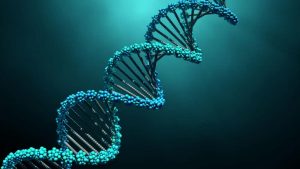The invisible environmental DNA (eDNA) that all organisms produce is proving to be useful in many fields. Researchers at Queen Mary University of London are currently studying eDNA extraction in order to develop tools for disease transmission, forensics, biomonitoring, and more.
eDNA is already being used as a biomonitoring tool in aquatic settings by allowing researchers to detect endangered or invasive species. The lead researcher for this study, Elizabeth L. Clare, has a background studying bats, and Chris Fox, co-leader, has experience with burrowing animals. With knowledge of animals known to live in caves or underground, these researchers hope that one of the many applications for this data can be to study animals in hard-to-reach settings in a less invasive manner.
The research team has successfully extracted eDNA from the air, allowing for genetic material to be collected along with microbes, pathogens, fungal spores, and pollens. Clare and her team are conducting experiments to collect mammalian eDNA from naked mole rats in a controlled setting. The rats occupy a room that has only been exposed to the animals for over a year.
Clare and her team replicated the method used for aquatic settings by sucking air from the burrows and the room and putting it through air filters to extract the eDNA. With a total of 12 samples, only two did not result in successful extraction of rat DNA.
With this data, the researchers hope to provide new knowledge for forensic traces. Because all organisms leave behind eDNA, this may prove helpful when blood, hair, or fingerprints cannot be found on a crime scene.
Another application of this development is mapping transmission of infectious diseases and allergens. In particular, this information may prove useful in studying the spread of the coronavirus, leading to improved guidelines for social distancing as well as other methods for reducing the impacts of the disease.
With this study, researchers are looking to answer the questions, “How far can it travel?” and “What size space is optimal for study?” As information regarding this methodology continues to evolve, so to will the widespread applications for healthcare, biology, forensics, and other areas.























